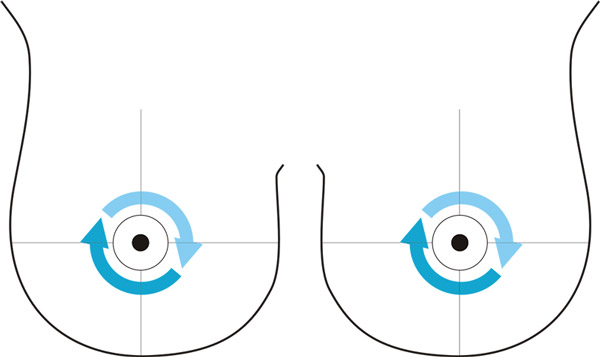The day of surgery
![]() Please bring a paper copy of this guide with you on the day of your surgery.
Please bring a paper copy of this guide with you on the day of your surgery.
Before you go into the operating room, a number of steps may be required for your surgery:
- Registration
- Sentinel lymph node injection appointment (if you are having this procedure, and if it hasn't been done a day prior to your surgery)
- Seed injection (if are you having this procedure, and if it hasn't been done at an earlier date)
Registration
Where do I check in?
- When you get to the hospital, check in at the location provided to you by your surgeon's administrative assistant.
- The registration locations include
- Surgical Services Registration Desk: M Wing, Ground Floor, Room 502 (MG 502)
- Breast Imaging Department: M Wing, 6th Floor, Room 205 (M6 205)
- Nuclear Medicine Department: A Wing, Ground Floor, Room 21 (AG 21)
- Bring your Ontario Health Card.
- You will be given a locker space to store your clothes and personal items, such as eye glasses, during your surgery.
Please DO NOT bring:
- Money
- Jewelry
Please label with your name and contact information:
- Cell phones
- iPads or other electronic devices
The hospital will not take responsibility if they are lost or stolen.
How many family members or friends can come with me on the day of surgery?
- Please bring ONLY 1 person with you to the hospital. Your companion will be asked to stay in the waiting room until you are ready for surgery. The person can then be with you until you are called for surgery.
- During your surgery, your family member or friend can wait in room MG 502.
 Note:
Note:
Very rarely, surgery cases are cancelled because there is someone else who needs an emergency surgery. If this happens to you, you will be contacted by your surgeon’s office and a new surgery date will be booked as soon as possible.
For some patients: Sentinel Lymph Node Injection Appointment »
As part of your lumpectomy, the surgeon will remove sentinel lymph nodes in the armpit on the same side as the breast lump. The lymph nodes need to be specially identified before your surgery. This identification is called a Sentinel Lymph Node Injection. The injection takes place in the Department of Nuclear Medicine. The department is in A Wing, Ground Floor, Room 21 (AG 21). You will be given a map showing the location when you register. The appointment can take up to an hour.
What happens during the sentinel lymph node injection?
- The sentinel nodes are specially identified so the surgeon can find them.
- This is done by injecting a small amount of radioactive tracer into the breast.
- The tracer travels to the sentinel lymph nodes.
- The amount of radiation that the tracer gives off is very little. It will not hurt you.
How do I get ready for the injection?
- The injection is made into the skin near your nipple and may sting.
- You may want to use EMLA cream and/or Tylenol (acetaminophen) to help reduce any pain or discomfort.
- You can buy this cream at a pharmacy. You do not need a prescription.
- Put the cream outside the areola (the dark area of the nipple) on the breast needing surgery up to 1 hour before your appointment.
- You can take some Tylenol (acetaminophen) up to 30 minutes before the injection (DO NOT take Tylenol if you are allergic to it).
- Please DO NOT take Aspirin (acetylsalicylic acid or ASA) because it may increase bleeding from surgery.

Apply EMLA cream to the breast needing surgery around the areola as shown by the arrows on the diagram.

Note:
Some patients have the sentinel lymph node injection appointment on the day BEFORE their lumpectomy surgery. Your surgeon's office will confirm with you when your appointment will take place.- If you are one of these patients, go directly to the Department of Nuclear Medicine – in Room AG 21 – at your appointment time. Make sure you bring your Ontario Health Card and Sunnybrook Card.
- The appointment can take up to 1 hour. You will go home afterwards.
- The next day you will come back to the hospital for your lumpectomy surgery and the removal of the sentinel lymph nodes.
- When you get to the hospital on the day of your surgery, please check in at the Surgical Services Registration Desk. It is located in M Wing, Ground Floor, Room 502 (MG 502).
Operating room
Once you have finished all of your pre-surgery appointments, you will be taken to the Same Day Surgery Unit. Nurses will complete the final checks and an intravenous (IV) will be started in your hand. When the surgeon is ready, you will be brought into the operating room.
What happens during and after surgery:
Patients having a lumpectomy »
What will happen during my surgery?
- You will be put to sleep using a general anesthetic. Medication to make you sleep will be given through an intravenous needle.
- A tube will be placed down your throat to help you breathe.
- A small incision (cut) will be made over the area that needs to be taken out. The surgeon will then remove the lump, plus some normal breast tissue around it.
- All the tissue that is taken out will be sent to a lab to be examined by a pathologist (a doctor).
- The cut is closed with dissolving stitches.
- Paper skin tapes (known as Steri-Strips) are usually put over the cut.
- A dressing, or bandage, is then placed over the skin tapes.
What will happen after the operation is done?
- You will be taken to the recovery room.
- When you wake up, you will be moved back to the Short Day Surgery Unit in Room MG 601
- A nurse will call your family member or friend to come and visit you.
- You will continue to rest and recover. The nurses will start to get you ready to go home.
- The surgery team will give you a prescription for pain medication before you leave the hospital.
Patients having a lumpectomy and axillary lymph node dissection surgery »
What will happen during my surgery?
- You may have a regional anesthestic (the local area where you are having the operation is numbed) and sedation through an intravenous needle or a general anesthetic.
- If you have a general anesthetic, medication to make you sleep will be given through an intravenous needle and a tube will be placed down your throat to help you breathe.
- A small incision (cut) will be made over the area that needs to be taken out. The surgeon will then remove the lump, plus some normal breast tissue around it.
- All of the lymph nodes will also be removed from the armpit area.
- All the tissue that is taken out will be sent to a lab to be examined by a pathologist (a doctor).
- The number of lymph nodes removed and if there is any cancer in them, is not known until the final results are completed. It can take 2 to 3 weeks for this information to be available.
- One drainage tube will be put in place to drain the fluid from the armpit.
- The cut area (incision) is closed with stitches that dissolve and covered with paper tapes (known as Steri-Strips). A dressing, or bandage, is placed over the paper tapes.
What will happen after the operation is done?
- After your surgery is done, you will be taken to the Post Anesthetic Care Unit (PACU), which is also known as the recovery room.
- Most patients go home the same day.
- When you wake up, you will be moved back to the Same Day Surgery Unit in Room MG 601.
- There will be 1 drain in place. Instructions on how to care for your drain will have been explained to you in a pre-surgery class.
- A nurse will call your family member or friend to come visit you.
- The surgery team will give you a prescription for pain medication before you leave the hospital.
- Nursing care will have been arranged for you by your surgeon’s office to help you with your drain care either in your home or at a community clinic.
- You will continue to rest and recover. The nurses will start to get you ready to go home.
- One of the nurses from the cancer centre will call you the next business day after your surgery.
- If you are staying in the hospital, the physiotherapist, occupational therapist and the surgical team will see you the next morning. The nurse will review drain instructions with you.
Patients having a lumpectomy and a sentinel lymph node biopsy »
What will happen during my surgery?
- You will be put to sleep using a general anesthetic. Medication to make you sleep will be given through an intravenous needle.
- A tube will be placed down your throat to help you breathe.
- A small incision (cut) will be made over the area that needs to be taken out. The surgeon will then remove the lump, plus some normal breast tissue around it.
- Some of the sentinel lymph nodes will also be removed. This is called a sentinel lymph node biopsy.
- To find the nodes, the surgeon will use a probe that locates the radioactive tracer that was injected before your surgery.
- The surgeon may also use a blue dye to find the sentinel lymph nodes. This procedure is done in the operating room while you are asleep under general anesthetic.
- The surgeon injects the blue dye into the breast using a needle. The dye travels to the nearby sentinel lymph nodes and helps the surgeon to see them more clearly.
- All the tissue that is taken out will be sent to a lab to be examined by a pathologist (a doctor).
- The cut is closed with dissolving stitches.
- Paper skin tapes (known as Steri-Strips) are usually put over the cut.
- A dressing, or bandage, is then placed over the skin tapes.
What will happen after the operation is done?
- You will be taken to the recovery room.
- When you wake up, you will be moved back to the Short Day Surgery Unit in Room MG 601
- A nurse will call your family member or friend to come and visit you.
- You will continue to rest and recover. The nurses will start to get you ready to go home.

Note:
You must have a responsible adult to take you home. It is dangerous for you to drive for 24 hours after your surgery because of the long-lasting effect of the anesthetic and pain medication.






